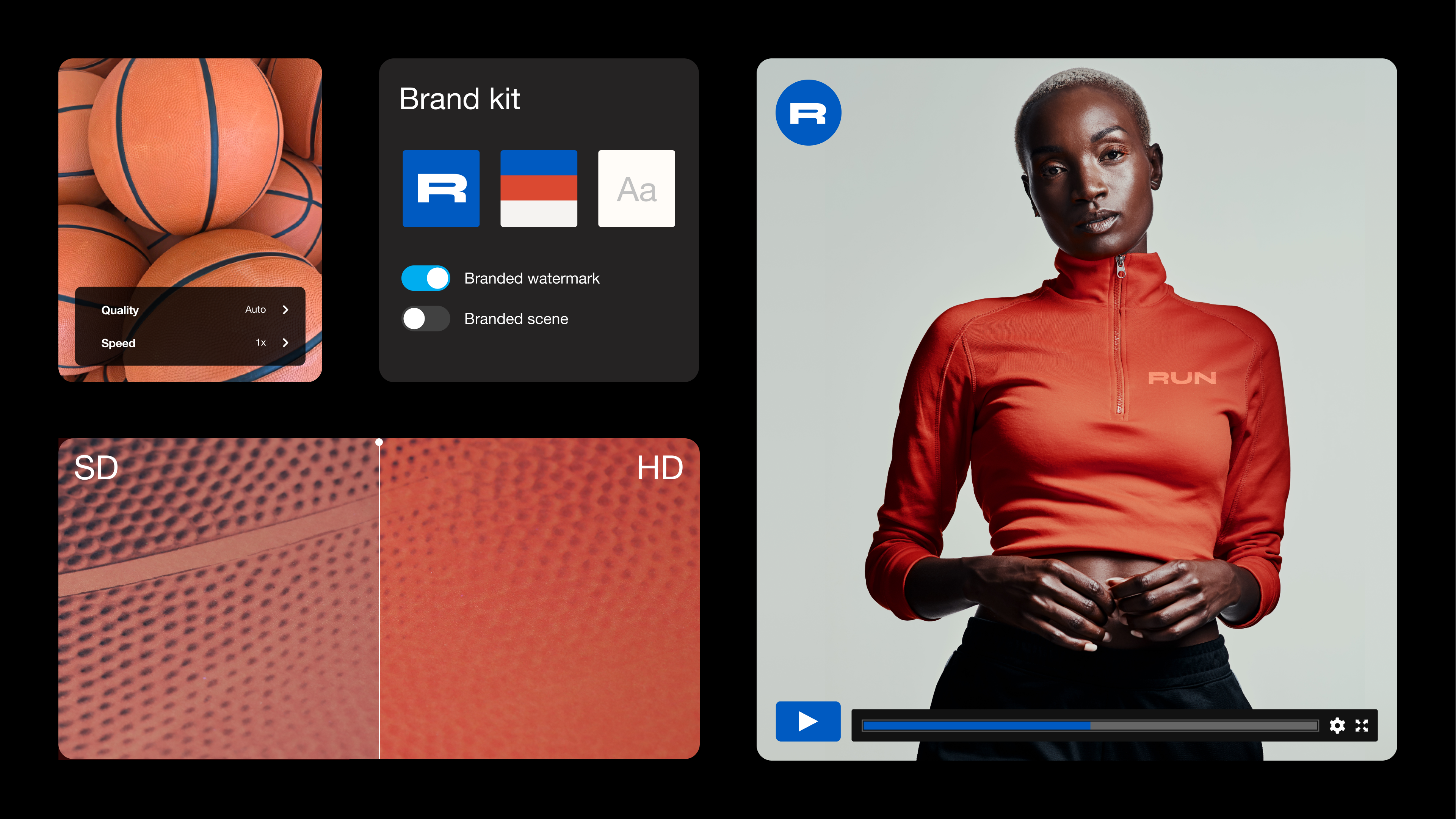It’s funny to think about now, but in the earliest days of the internet the concept of video streaming online was about as absurd as virtual reality headsets. However, as we all quickly learned, there’s nothing the internet can’t do.
Today, video streaming online is very much part of our daily lives. But what exactly is the mechanism that allows us to play video to on a computer or smartphone?
Let’s take a look at the all-important video player and trace its roots from hardware to software. Plus, we'll explore how you can use different platforms for your own video playing needs.
What is a video player, anyway?
Before we get too ahead of ourselves though, let’s take a step back and answer some basic questions about what a video player is by definition.
Simply put, a video player is any software (or hardware) that allows for the playback of video.
In the beginning, video players were hardware appliances like a VCR or DVD player which users had to load with physical media to playback video. Fast forward to today — video players are a software which can be used on computers, smartphones or any web browsing devices.
Looking online, video players can range from built-in applications like Quicktime, Windows Media Player, or VLC to web-based options like browser or Javascript video players, which can have many built-in tools and functionalities.
What do you use a video player for?
When looking into what type of video player might be right for you though, the question really comes down to: what do you even use a video player for?
If you’re looking to find a way to play different formats (like MPEG, MKV, or other) you might want one solution, whereas if you’re looking for different uses (like the ability to download video and watch them offline) you might want to use another type of video player.
Here are four popular use cases for online video players in today's landscape:
To play high quality video
Creative professionals expect a certain quality of playback. A laggy online video player might not show your business, products, or services in the best light. Consumers and watchers are more impatient than ever, so an online video player that can't accommodate high resolution uploads and has crazy buffering times is a no-go.
With a high quality, add free video player at your fingertips, you can showcase your reels or creative work in a comprehensive video library, and use the player to show potential clients and customers exactly what you can offer.
To make your videos downloadable
Another option to consider would be whether or not you want your videos to be downloadable. Do you want your content to be a watch destination for your audience? This option can help empower content creators by allowing them from downloading your videos to watch them later offline.
There are benefits to making videos downloadable; viewers can watch your content on the go without an internet connection, maintaining a consistent through-line to your audience. On the opposite side of the coin, however, you might run into misattribution and your creative work being shared and reposted without credit.
To share company knowledge
Knowledge sharing through video is huge for today's businesses, thanks to hybrid work and a more distributed global workforce.
For many executive communication teams, having the ability to share knowledge across the room or the globe unlocks fresh ways of connecting and absorbing information — whether that's embedding training videos in your corporate wiki or allowing employees to download workshops and town halls to watch later (at their own pace!)
To enhance your website with video
Embedding a high quality video player on your website can be a great way to showcase your products or services on landing pages. A dynamic video homepage hero can leave a strong impression about your brand, or a how-to demo can be a helpful tool on product pages.
Media player vs. video player
Another distinction to keep in mind when looking at different video player options and concerns is to understand the difference between a media player and a video player. In some conversations, these terms can be interchangeable, however there is a distinct difference and it has to do with how video is downloaded and played.
Defining media player vs. video player
5 popular video players to consider
Now that we’ve covered some of the basics for what a video player is and what considerations you should give for the different types, let’s take a look at some of the best options available to content creators and marketers alike.
Keep in mind, these video players are divided up into two distinct types. We have our app-based video players which require users to download a software and open it on their computer or device, then we also have our web-based players which a user can navigate to while browsing the web.
Both are great in their own ways, however you’ll want to understand your own needs before making your ultimate decision.
1. VLC Player
One of the most familiar and trusted names in the video player space, VLC media player is a free and open-source media player software which functions both as a video player and as a streaming media server.
As a desktop app player, VLC media is a great cross-platform option that allows for downloadable content and is available for most operating systems and mobile platforms like Android, iOS and iPadOS.
2. RealPlayer
Similar to VLC Player, RealPlayer is another legacy cross-platform media player app. It's great for working with different container file formats including MP3, MP4, QuickTime and more. RealPlayer is also an app player available for many operating systems including Linux, Unix, Palm OS and Windows Mobile.
3. Vimeo
Moving on to the other type of web-based video players, we have to highlight our Vimeo online video player which gives users all of the tools they need to share, embed, and distribute video on their own. With the Vimeo player you get an online HTML5 video player engineered to make your work look beautiful anywhere.
There are also lots of changeable features where you can customize every part of your video player, as well as try out different privacy settings and controls. As an ad-free HDR player, Vimeo player is one of the fastest and most reliable video players around and can support all major codecs for high-speed transcoding.
4. PlayerFab
PlayerFab is an MP4 player app. PlayerFab supports Windows Media Dual Stream files and is considered one of the best 3D media player options for Windows PCs.
5. JW Player
Finally we also have the JW Player. This is an easy-to-use browser-based video player that is designed for embedding videos mostly for self-hosted websites.
Final takeaways
There's no shortage of video players out there, but the player you use depends on your unique creative needs. If you’d like to learn more about the Vimeo online video player you can check out a full Vimeo Player API demo here.
You may also want to learn more about how you can use Vimeo before your video gets to the Vimeo video player, you can also leverage Vimeo's editing tools like the clip trimming tool, file combining feature, compression assistant, frame cropping utility, animated GIF tool, and more.

